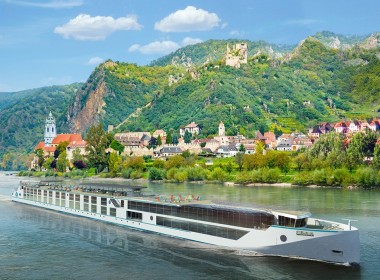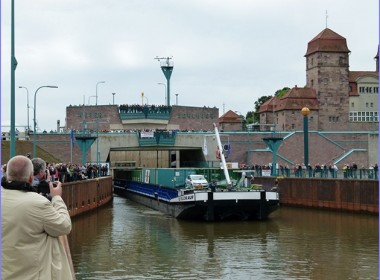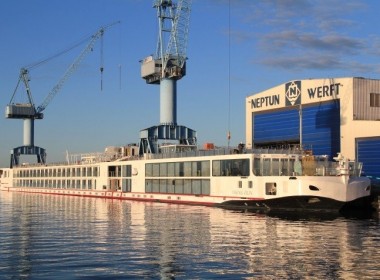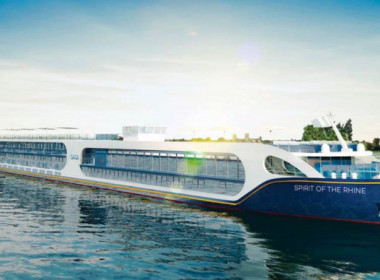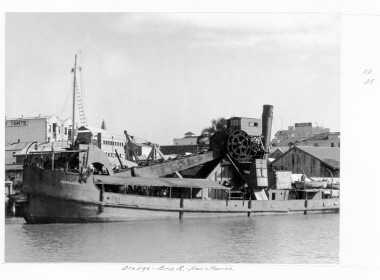COLUMN | Carnage created by the Greens – Selling Australia down the river [The Education of an Innocent Australian]

Who would believe it took Australians so long to figure out that the carnage from the bushfires was largely the result of Green and Environmental Protection Authority (EPA) ideological policies and resultant laws over recent decades?
These laws ostensibly focused on the ideology of “protection of pristine nature”. In reality, it was a program, designed by urban ideologues with ill-informed perceptions of nature, “to block the grotty public in their noisy 4WDs and those pesky farmers from disturbing our koalas while we shepherd the Australian public into poverty and get them back into mud huts eating mung beans.”
The hardest-working Australians, the farmers, have been criticising the EPA for a long time, and those with enough stamina to defy the law by burning back around their own properties, have been fined heavily. These laws should be rolled back without delay, dithering or royal commissions.
Donald Trump was smart enough during campaigning for the US Presidency, to acknowledge that EPA ideologies, rules and laws were stagnating many areas of the US economy. President Trump announced a raft of rollback on these laws, including those governing navigable waterways, when recently addressing a conference of farmers‚ some of the chief adversaries of the previous Obama Administration policy and a key part of Trump’s base.
Even in Australia, farmers and other groups have argued that EPA laws are too far-reaching, requiring grand and costly efforts to protect relatively small bodies of water that run through their property, ultimately subjecting large swathes of land to pious state and federal oversight governance.
Trump’s latest rule, the Navigable Waters Protection Rule, will be implemented imminently. The EPA critics wail that it is likely to increase the amount of pesticides and fertilisers which leach into streams, wetlands, and rivers, but that already happens in rainfall events, as gravity takes all the water down to the sea in all nations.
Repealing WOTUS (Waters of the US) was a campaign promise by Donald Trump, who called it “one of the most ridiculous regulations of all” when speaking at the American Farm Bureau Federation in Austin, Texas.
But wait, there’s more!
Here in Australia, the second wave of carnage has already started, and yet again it is due to the Green ideology and EPA laws.
The halting of the dredging of the Brisbane River was decided in 1996. The lies spun by agitated green groups, aided by the gullible Mayor, Jim Soorley, about the “ugly dredgers causing bank erosion” from their diminutive 300hp engines and four-knot speed, only capable of running with the tide, were simply untrue. Blatant lies that green groups have honed into an art form, and EPAs turned into laws.
At a meeting in Mt Cosby State School, the dredging was stopped, concluding more than 100 years of effective acquisition of sand and aggregates. Brisbane then was the cheapest place in the country to build a house due to the abundance of cheap aggregate delivered into the city by the river, hence cheap concrete, bricks and tiles.
The lone alternate voice in these proceedings happened to be me, and as a consultant I protested against these lies, explaining that the proposal of replacing these two old 2,000-tonne quiet barges with 160 truck movements, each with 400hp turbocharged diesels every day was madness, endangering schoolkids, contributing thousands of cubic metres of truck exhaust gases daily, and adding to road maintenance costs. I concluded that the halting of the river dredging would shallow the river and exacerbate the danger of flooding. But it was a set-up, and I was dismissed.
Labor’s Soorley hailed the decision to halt dredging as, “a significant victory for Queensland, and the Brisbane River had been treated as a sewer and a mine.”
Queensland Conservation Council’s Imogen Zethoven, said the agreement was, “a major breakthrough for the rehabilitation of the river,” and continued: “Clearly, dredging is way out of line with community attitudes.” The river is still brown, like others in the nation.
The truth of the matter is that most river port cities in the world have active dredging programs with aggregate extraction as the lowest low cost method of maintaining navigation channel depth and mitigating flood levels. Take a trip around Asia and you will see on the Pearl River in China, Saigon River in Vietnam, and the Chao Phraya river in Bangkok, multitudes of low powered grab dredgers, extracting aggregate and keeping the channels deep and navigable.
Fifteen years later, in 2011, as that ex-consultant, I watched with dismay the TV coverage of the Brisbane River floods, claiming 38 lives. The enquiry ignored the fact that continued river dredging could have dropped the flood levels. Soorley, Zethoven, and the EPA should hang their heads in shame.
The Brisbane upper river was navigable 46 kilometres from the CBD by the Riverside export coal barges to the port until the 1990s. Recent investigations by the Port of Brisbane to transport containers from the Acacia Ridge rail terminal to the port dismissed the river transport option, as the Brisbane river was now “way too shallow”. Rail or road alternatives will be at least 40 times more expensive, with added exhaust and noise emissions.
Despite state governments getting royalties from every cubic metre of sand or aggregates extracted, dredging was halted as the Green mantra spread about saving the planet.
Cruise ship companies are seeking new destinations, and the all-year-round good weather of Australia is a natural attraction. But even to anchor off some of the beautiful destinations and send their tenders ashore is being hampered by anti-dredging laws with river entrances that are inaccessible.
“Nowhere in our nation for the past 100 years will you find evidence of any environmental damage from dredging or transhipping”
Picturesque destinations such as Innisfail, 1770, and Cooktown are not accessible from the sea except at high tide, due to the lack of dredging at the river mouths. Occasionally a state program of a visit by a large dredger every five years pays lip service to the boating community.
Dredging 101 says that small amounts of dredging frequently is the best way to keep a river mouth deep and safe. But dredging, like back burning, has been demonised, and laws have been introduced to enforce this view. Even after the costly hurdles involved in getting dredge permits, the operation is then hit with obscene permit fees of $1,000 per day, even for small dredgers.
Look at the latest electronic marine charts around Australia and you will see that almost every creek and river outlet has been declared as a “sensitive fish habitat”, or “prescribed mangrove area”. Recreational fisherman have already called out EPA departments for such proclamations being made on no scientific basis.
138 river and creek outlets around the nation (https://youtu.be/A14qiQUZNzU), many of which were navigable by our forefathers, have been stymied by green madness and only when more people are killed in floods and dangerous bar crossings will we wake up.
Green influence on dredging policies for the past 25 years has been an economic disaster for jobs and prosperity for all states. Despite their job rhetoric, the present Green-Labor Government in Queensland has finalised policy not only to halt capital dredging around the state, but to halt mini ports used for transhipping and export.
The successful mini-port of Bing Bong, NT, has exported more than $11 billion worth of cargo in the past 27 years with one small vessel, and the government royalties were more than $600 million. The indigenous Mawa group are still equity participants in the operation.
The current proposal by the Hopevale Congress, just north of Cooktown, to export silica sand by barge transhipment was soundly rejected by GBRMPA (the Great Barrier Reef Marine Park Authority) and Queensland Transport, despite the product being exported being the same as the stuff on the seabed at the proposed transhipment point making the remote possibility of pollution by spillage at an astounding ZERO.
Nowhere in our nation for the past 100 years will you find evidence of any environmental damage from dredging or transhipping. This is not science; it is ideology pedalled by fools and implemented by a bureaucracy permeated with high achievers in mediocrity.
While we may never get the brightest leader, we hopefully should get one smart enough to rollback this Greens/EPA madness.


